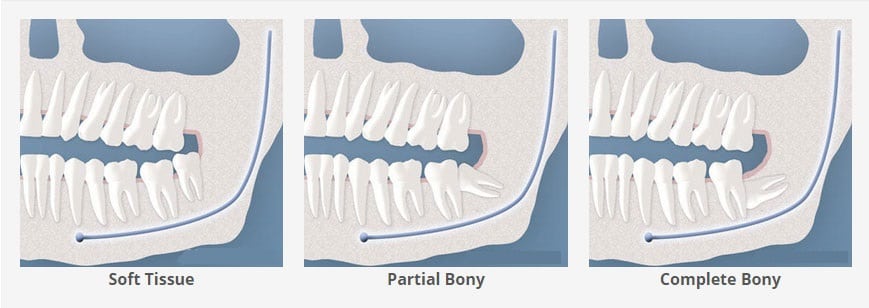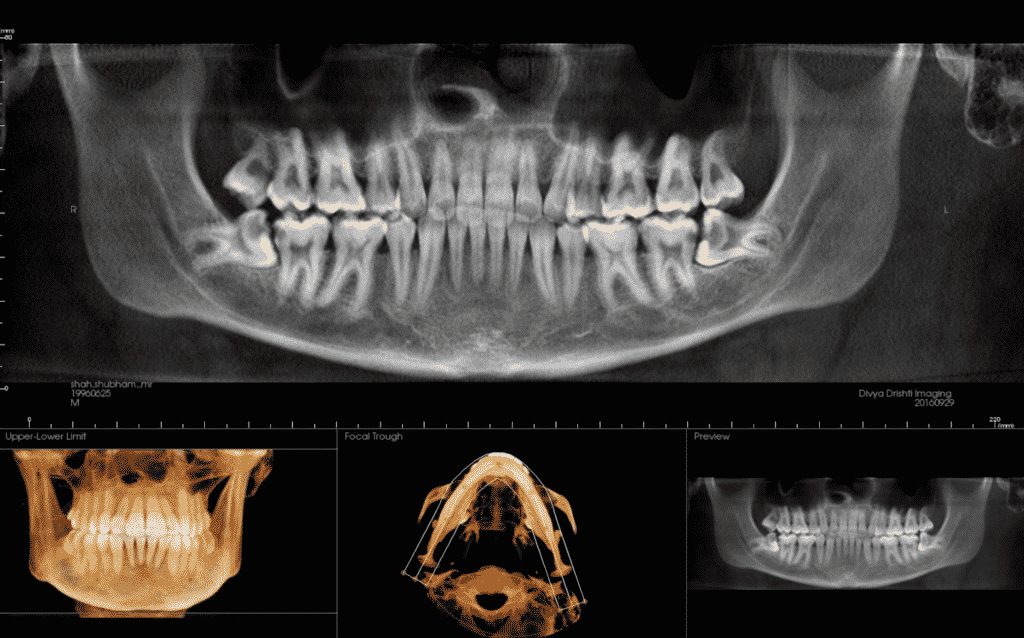In some instances, impacted wisdom teeth or third molar extraction is extremely necessary. In other times it might be recommended to avoid pain and decay in future.
Third molars or wisdom molars, as they are popularly known, are placed at the end of the dentition in both the jaws. They normally appear in the mouth between the age of 18 to 25 years. In the majority of the population, the most commonly impacted tooth is in the lower jaw.
But What is an Impacted Tooth?
It can be described as a tooth that cannot occupy its natural position in the dental arch. Invariably the causes of impaction are lack of space in the jaw bone. This impacted molar is placed in various positions which could be vertical, angled and horizontal.
These may appear in the mouth partially visible or not visible at all. Those impacted teeth which are partially erupted get decayed or lead to the decay of adjacent teeth since it is hard to brush the area and keep it clean. The decay may not be causing symptoms initially but only when it has progressed significantly that it causes pain either in the third molar region or second molar or both.
The treatment for such a condition may involve the removal of the third molar and/ or root canal treatment of the second molar.

The Horizontally impacted third molars which are slightly above and visible can also get decayed and affect the second molar. The treatment will mostly remain the same as above. The deeper impacted third molars do not cause any symptoms in most cases but they could be a reason for the development of certain cysts (ballooning growth in the bone) or some fact growing benign tumors. The treatment will be the removal of third molars along with the cyst/ tumor.
Another effect of horizontally impacted third molar in the lower jaw is a risk factor for a fracture of the jaw due to accidental impact blunt blow to the jaw. The treatment required is a major surgical correction in that scenario.
The lower right third molar was associated with a Dentigerous Cyst which was removed under General Anaesthesia.

Horizontally impacted third molars in the lower left and right back region of the jaw.

Diagnostics play a very important role in treatment planning and providing the best form of dental treatment. Especially for diagnosis and extraction of impacted third molars, a 3D CT scan of the jaw is essential to understand the relationship of the tooth with nerve and important anatomical structures in the lower jaw.
Commonly these teeth are extracted as a routine procedure in the dental clinic under local anesthesia. In a few cases, hospitalization and General Anesthesia may be preferred. Postoperatively the patient may have swelling, a temporary reduction in mouth opening and minimum pain. The surgery should be preferably performed by an experienced Oral Maxillofacial Surgeon.
Don’t forget to subscribe to our Youtube Channel to find more about dental treatments and how they can be beneficial to you.
You can find more details about third molar extractions on this link


